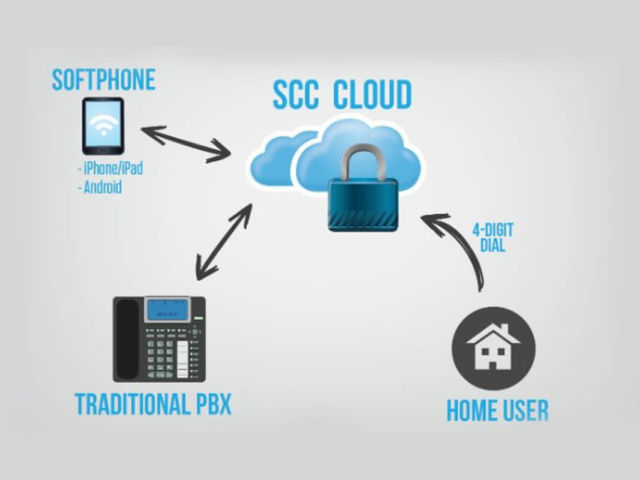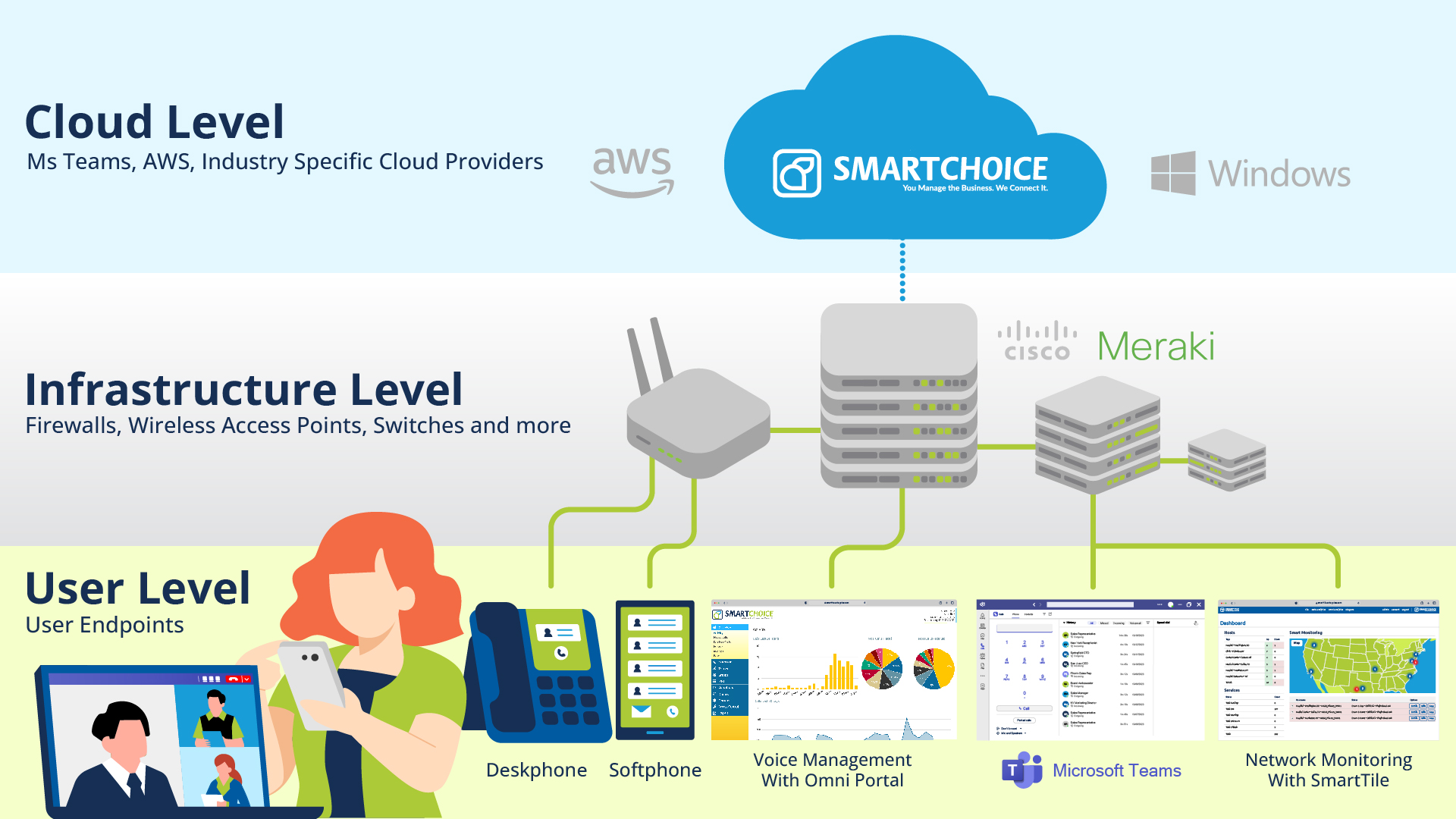How Bring Your Own Carrier (BYOC) is Improving the Modern Workforce
Why flexible phone service provisioning is the future of enterprise collaboration

The global Unified Communications-as-a-Service (UCaaS) market is booming. Accelerated by the steep rise of remote work over the past year, the sector is expected to grow by 17.8% over 2021.
While the benefits of UCaaS, such as increased flexibility and better cost control, are without doubt, there are several different ways you can migrate your communications to the cloud. What works best for your business depends on your unique environment collaboration needs.
One trend that’s rapidly gaining traction is Bring Your Own Carrier (BYOC). This approach lets businesses choose their own carriers and connect them to their existing communications tools and platforms, thus providing greater flexibility, functionality, and cost control.
What is BYOC, and why does it matter?
In recent years, major carriers have been moving from physical lines to Session Initiation Protocol (SIP) trunks, which allow phone calls to be delivered over the internet. The demand for affordable global communications has made SIP trunking an economic necessity, while the rise of almost ubiquitous broadband internet has made it possible.
Just like PSTN before it, SIP trunks are merely methods of transporting phone calls. On top of that, you need a logical layer for directing the calls to and from the right places and a platform layer for providing the specific functionality today’s enterprises need. This includes conference calling, automated attendants, call recording, and integration with any other communications channels you use, to name a few.
In most cases, the quickest way to move your communications over to the cloud is to opt for an all-in-one solution, such as a UCaaS platform that bundles everything together. However, while the bundled approach is an essential solution for many businesses, it may not be the best fit for others. As cloud communications matures, companies are opting to move to a BYOC alternative instead of using only Teams and Zoom as the sole communications provider because of the below:
- Significant cost savings – with most service providers, you ordinarily need to have one calling plan per user, which means you need to purchase plans on a 1:1 ratio. If, for example, you have 100 employees but never more than 30 using the phone at the same time, you have a calling ratio of 1:3, yet you’d still be paying for 100 calling plans when you only need 30 actual calling paths.
- Flexibility – bundled offers might be convenient, but they also lack the adaptability you need to choose your own platforms and solutions. For example, a bundled service provider might only support Microsoft Teams, yet your team also prefers to use Zoom for certain events. Sometimes, opting for the bundled approach requires major and expensive changes to your existing infrastructure.
- Reliability – not many cloud communications providers actually own their own core telephony infrastructure. Instead, they aggregate phone numbers and coverage from a range of SIP trunk providers. This translates into a lack of consistency in feature sets and quality. For example, some SIP trunk providers might not support HD voice, while others might be prone to interference and service outages.
For medium to large-sized enterprises, BYOC provides the option to eliminate the various products and services to build a communications infrastructure that’s tailored to your specific needs rather than the other way around. The separation of the platforms from the underlying telephony systems gives you access to the benefits and features of your favorite platforms while letting you use trusted service providers as well.
Microsoft Teams vs. Zoom, and the benefits of using both
SmartChoice recently partnered with Microsoft Teams and Zoom to provide clients with even greater flexibility over the platforms they can choose. Microsoft’s Smart Direct Routing feature allows users to make and receive phone calls on any device using Microsoft Teams, while Smart BYOC lets you integrate Zoom into your communications architecture.
Easily the greatest benefit of supporting both platforms is the degree of flexibility it provides. The modern workplace is no longer defined by a static office environment. Workforces are more distributed than ever before, and employees and contractors are increasingly used to getting work done using their preferred sets of apps and platforms. Trying to get everyone to use the same system often requires a great deal of extra training, which also means it ends up taking much longer before new hires achieve maximum productivity.
Supporting both Microsoft Teams and Zoom provides better support for modern workstyles to enable stronger collaboration, seamless communication, and enhanced productivity. These benefits combine to reduce costs, especially if you’re no longer restricted to a 1:1 calling plan ratio. Also, if you’re already using Microsoft Office 365, then Microsoft Teams is included in the license already, so you might as well use it!
SmartChoice allows enterprises to pay for a single carrier while enjoying the unique advantages of two different systems. Not only does this solution offer greater flexibility – it also provides network redundancy and simplified disaster recovery.
Should you bring your own carrier(s)?
SmartChoice believes in platform evangelism, a concept that focuses on bringing multiple solutions together to deliver maximum value, resilience, and flexibility. These multi-faceted solutions have become a key driver of economic growth because they’re based on the understanding that bringing together two or more different solutions generates greater value than they can apart. That’s why we have introduced direct routing and bring your own carrier for two of the world’s most popular business communication platforms – Microsoft Teams and Zoom – into our UC solution.
SmartChoice consolidates all of your favorite services under one platform for easier management, scalability, and cost control. This reduces the burden on end-users who tend to have their own preferred solutions, yet don’t have access to the technical know-how needed to integrate an increasingly disparate range of platforms. We also have dedicated project managers who work with clients to ensure a smooth setup and maintenance process.
Moreover, bringing your own carrier is often the only practical way to increase adoption rates at scale. Establishing coverage can take time, especially for global enterprises with distributed workforces. For example, if one branch or department already has a carrier that works well for them, then why change it? Being able to accommodate multiple carriers and manage them in a centralized platform helps overcome the challenges of scale without having to make major modifications to your underlying infrastructure or forcing end users to work with one solution. For example, businesses wanting to streamline their global telephony carrier management might port their existing phone numbers to Zoom or Microsoft Teams.
Another reason for bringing your own carrier is that it provides unprecedented flexibility over integrating additional features. For example, some users might need certain additional capabilities that their current setups don’t offer, thus prompting the need to add new carriers. BYOC makes it possible to access SIP interfaces to work with multiple tools, like conferencing, call routing, and interactive voice response (IVR) systems.
Given that modern workforces are increasingly distributed, and even smaller businesses often work with contractors and employees scattered worldwide, there’s a greater case than ever for bringing your own carriers to existing collaboration platforms. In some countries, for example, Microsoft calling plans might be non-existent or, even if they are available, they might be far more expensive than other available solutions.
By partnering with SmartChoice, you can consolidate your calls into a single contract with a single bill, whereby you only pay for what you need. Instead of managing many different calling plans with multiple service providers, you can choose how many calling paths you need and align these with your existing investments in Microsoft 365 and/or Zoom. This means you no longer have to pay for the calling capacity you don’t use. Moreover, when you need more, you can simply add new calling paths in much the same way as you can add a new calling plan with Microsoft Teams or Zoom.
Are you ready for the future of business telecommunications?
Today’s businesses have more options than ever before when it comes to building out their technology infrastructures. On the other hand, this vast range of choices means the underlying complexity has become almost impossible to keep up with. Thus, companies need to strike the optimal balance between complexity and flexibility, while also ensuring complete redundancy and continuity of their critical operations – such as call centers, help desk, remote sales force, and more.
Choosing a BYOC partner that can tailor and fine-tune solutions to the unique needs of your business allows you to enjoy complete control and flexibility, without having to implement and manage the underlying infrastructure yourself. There’s simply no better way to future-proof your business communications in a time of constantly evolving customer demands and shifting workstyles. And, best of all, you can dramatically reduce your calling costs!
SmartChoice is a technology company based out of New York City with a unique portfolio of solutions including UCAAS, collaboration, software and analytics, dedicated contact centers, security, infrastructure, and managed connectivity. Through its unsurpassed white-glove service and 24x7x365 U.S. based support, it has grown to become one of the largest award-winning PBX/SIP providers in North America.





